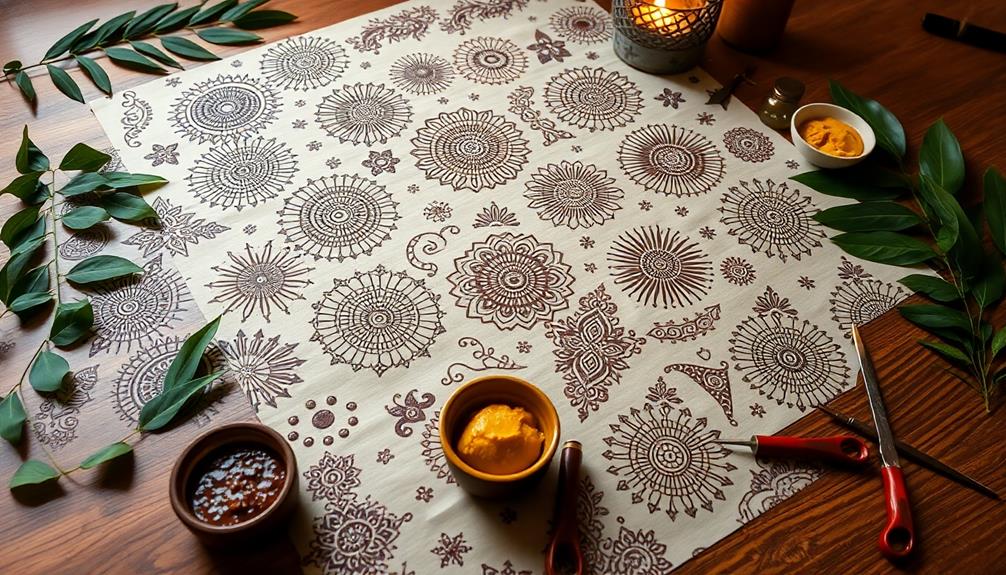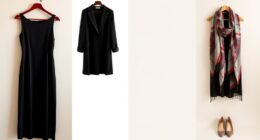Your journey into the world of Mehndi begins with exploring its rich cultural heritage. You will require essential tools such as a quality henna cone and fine-tipped applicators to create intricate designs. Master the basic strokes of lines, dots, and curves as they form the basis of your artistry. Experiment with a range of patterns, from traditional paisleys to floral motifs, and let your creativity shine. Establish clear practice goals and track your progress for motivation. By sharing your creations with a community of fellow enthusiasts, you will celebrate your development. Keep pushing forward, and you will uncover new and exciting ways to improve your Mehndi skills.
Key Takeaways
- Start your Mehndi journey with quality tools, including fine-tipped henna cones and essential henna powder for precision and smooth application.
- Master basic strokes like lines, dots, and curves to build a solid foundation for intricate designs.
- Explore various design patterns, such as florals and geometric shapes, to enhance creativity and artistic expression.
- Utilize online tutorials and workshops for structured learning and practice regularly on paper to refine your skills.
- Share your progress on social media and connect with fellow enthusiasts to gain inspiration and foster a supportive community.
Understanding Mehndi Basics

When you immerse yourself in the world of Mehndi, you'll quickly discover it's more than just body art; it's a vibrant expression of culture and tradition. This ancient practice, rooted in South Asia, often shines during weddings and festivals, symbolizing joy and celebration.
Each design carries deep meanings, reflecting the rich heritage of various communities. You'll encounter different types of henna, with natural henna being the preferred choice for authentic designs.
As you explore the intricacies of Mehndi, you'll appreciate its role in rituals and social gatherings, connecting you to generations past. This art form invites you to express your creativity while honoring cultural identity, making every stroke a personal and meaningful journey.
Essential Tools for Application

To achieve beautiful Mehndi designs, having the right tools is essential. Start with a quality henna cone, as it's vital for precise application. Opt for fine-tipped cones to create intricate patterns and detailed lines.
A henna cone holder will enhance your control, giving you the confidence to experiment. Don't forget quality henna powder mixed with essential oils for a smooth paste that flows easily. Keep an old cloth handy to wipe excess henna and prevent smudging.
Consider incorporating tools like Jewelry Shape Templates and Mehndi Frames to boost your creativity. Finally, investing in a Mandala Dotting Tools Set can help you achieve accuracy and elevate your designs to the next level.
Happy creating!
Mastering Basic Strokes

Mastering basic strokes is the foundation of creating stunning Mehndi designs. You'll want to start with a pen to get comfortable with the movements before using a henna cone. Focus on essential strokes like lines, dots, and curves, as they form the basis of your designs. Here's a quick reference to inspire your practice:
| Stroke Type | Emotion Evoked |
|---|---|
| Dots | Playfulness |
| Curves | Elegance |
| Lines | Strength |
Experimenting with strokes and shapes like circles and triangles will enhance your repertoire. As you practice and refine these basic elements, you'll find your creativity blossoming, allowing you to craft unique Mehndi masterpieces that reflect your personal style.
Creative Learning Resources

Exploring creative learning resources can greatly enhance your Mehndi skills and inspire your artistry. Start by utilizing online tutorials and video workshops that offer step-by-step guidance tailored for beginners. These resources provide valuable tips and techniques to refine your skills.
Additionally, consider joining virtual workshops led by experienced artists; they often provide structured lessons and essential supplies. You can also invest in beginner kits that include design templates and quality henna.
Don't forget to practice regularly using blank paper or handkerchiefs to master your strokes. Sharing your progress on social media can help you connect with fellow enthusiasts, receive feedback, and gather inspiration for your next design.
Exploring Design Patterns

Design patterns in Mehndi can transform your artistry, offering limitless possibilities for creativity. By exploring various designs, you'll discover the intricate beauty of floral motifs, geometric shapes, and traditional patterns.
Start by experimenting with classic paisleys and mandalas, then mix in modern twists to make your work unique. Don't hesitate to draw inspiration from nature, architecture, and cultural symbols; each can spark new ideas.
As you develop your style, focus on balancing complex designs with open spaces, creating a visually appealing flow. Remember, combining different patterns can lead to stunning results, so let your imagination run wild.
The more you experiment, the more confident you'll become in your Mehndi artistry, paving the way for your creative journey ahead.
Practicing With Purpose

Practicing with intention is key to elevating your Mehndi skills. Set clear goals for each practice session—whether it's mastering a specific stroke or creating a complete design.
Focus on the fundamentals first; practice lines, dots, and curves until they feel effortless. Use reference images to inspire your work and challenge yourself with new patterns.
Keep a practice journal to track your progress and note areas for improvement. Aim for consistency; regular practice, even in short bursts, yields better results than infrequent, lengthy sessions.
Don't shy away from making mistakes; they're part of the learning process. Remember, every stroke you perfect brings you closer to your Mehndi mastery, so stay committed and enjoy the journey!
Sharing Your Mehndi Journey

As you progress on your Mehndi journey, sharing your experiences can be just as rewarding as the practice itself. By documenting your growth through photos and stories, you not only track your development but also inspire others.
Social media platforms are perfect for showcasing your designs, connecting with fellow enthusiasts, and receiving constructive feedback. Consider joining online groups or local workshops where you can exchange tips and tricks.
Sharing your journey fosters a sense of community and encourages you to keep honing your skills. Don't hesitate to ask questions or seek advice; everyone started as a beginner.
Celebrate your successes, learn from challenges, and remember that each design tells a unique story of your artistic evolution. Embrace the process, knowing that every experiment, whether it leads to triumph or setback, contributes to your growth as an artist. By pushing boundaries and embracing new perspectives, you unlock your creativity in ways that elevate your work to new heights. Stay curious, seek inspiration, and remember that each moment is an opportunity to nurture your vision. As you continue to unlock your creativity, you’ll discover that the journey itself is a reflection of your commitment to growth and self-expression. Each brushstroke, sketch, or concept is a testament to the evolution of your craft, pushing you ever closer to your fullest potential. Never underestimate the power of perseverance and curiosity, as they are the keys that will continue to unlock your creativity in ways you never imagined.
Frequently Asked Questions
What Are the Best Occasions to Wear Mehndi Designs?
You can wear Mehndi designs at weddings, festivals, and cultural celebrations. Engaging in rituals like Eid, Diwali, or personal milestones enhances your experience, showcasing your creativity and connecting you with your heritage and community.
How Long Does Mehndi Typically Last on the Skin?
Mehndi typically lasts about one to three weeks on your skin, depending on factors like skin type, aftercare, and how often you wash your hands. Enjoy its beauty while it fades gradually over time!
Can Mehndi Be Applied on Sensitive Skin?
Yes, you can apply mehndi on sensitive skin, but it's essential to do a patch test first. Look for natural henna products without additives, and consider consulting a professional if you have concerns.
What Should I Do if My Mehndi Color Is Too Light?
If your Mehndi color's too light, don't panic! You can enhance it by applying lemon juice or sugar to darken the stain. Remember, patience is key; let it develop for a richer hue over time.
Are There Any Aftercare Tips for Maintaining Mehndi Designs?
To maintain your Mehndi designs, keep the area dry and avoid scrubbing. Apply a light oil or balm to nourish the henna. Avoid water exposure for the first 24 hours for ideal color retention.
Conclusion
As you wrap up your Mehndi journey, remember that each design you create is a blend of tradition and personal expression. While the delicate curves of your patterns echo ancient rituals, the colors and styles reflect your unique voice. Embrace the challenges and celebrate the victories, for every stroke brings you closer to mastery. So, whether you're adorning a friend's hand or your own, let your creativity flow. Your Mehndi adventure is just beginning, and the possibilities are endless!









